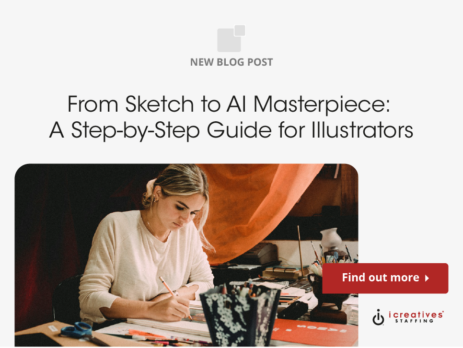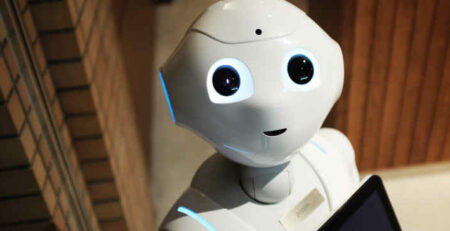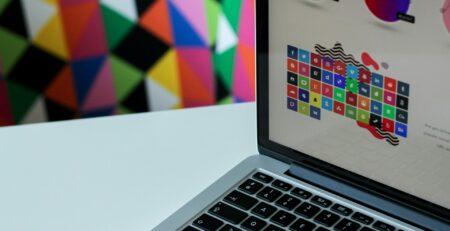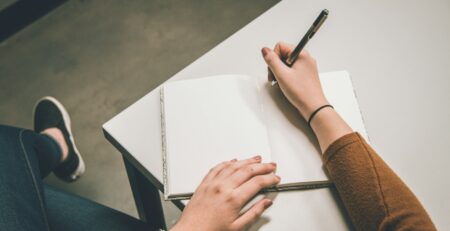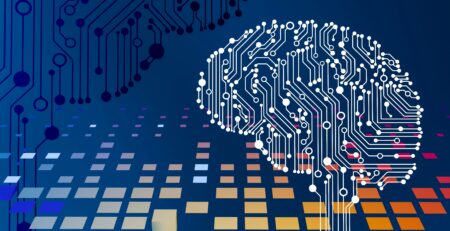From Sketch to AI Masterpiece: A Step-by-Step Guide for Illustrators
The evolution of digital tools has transformed the art of illustration, blending traditional sketching techniques with advanced AI technologies. This fusion has opened up new possibilities for artists, enabling them to create complex, intricate pieces that were once beyond human capability alone. As AI continues to evolve, it becomes an invaluable partner in the creative process, offering tools that can enhance, refine, and sometimes even revolutionize the way art is made.
For illustrators, understanding how to integrate AI into their workflow is not just about keeping up with technology but also about expanding their creative horizons. Whether you’re a seasoned artist familiar with digital tools or a traditionalist looking to explore new frontiers, this guide aims to navigate the exciting journey from a simple sketch to a stunning AI-enhanced masterpiece.
This comprehensive guide will cover the essential steps, tools, and considerations involved in transforming sketches into digital artworks using AI. We’ll explore everything from choosing the right software and hardware to understanding AI’s role in enhancing artistic expression. Additionally, practical tips and insights from industry professionals will help demystify the process and encourage artists to make the most of these technological advancements.
By embracing AI, illustrators can not only streamline their workflows but also discover new forms of expression and artistic possibilities. Let’s delve into the step-by-step process that helps artists bridge the gap between traditional sketching and futuristic AI artistry.
From initial concept development to final touches, this guide will assist you in mastering the art of AI-enhanced illustration, ensuring that your creative vision is realized with precision and flair.

Most Asked Questions About AI in Illustration
- What tools and software are best for integrating AI into illustration?
- How can AI enhance traditional sketching techniques?
- What are the challenges of using AI in illustration?
- How do I maintain my unique artistic style while using AI?
- Are there ethical considerations in using AI for creating art?
What Tools and Software Are Best for Integrating AI into Illustration?
Choosing the right tools and software is crucial for successfully integrating AI into your illustration process. The market offers a variety of AI-powered applications designed to cater to different aspects of the creative process, from initial sketching to colorization and final rendering. Adobe Photoshop, Corel Painter, and Clip Studio Paint are popular choices among artists for their robust features and AI integration capabilities.
Adobe Photoshop, for instance, offers features like neural filters and pattern recognition that can automate complex processes and enhance detail in artworks. Corel Painter’s AI-based style transfer features allow artists to apply unique textures and styles derived from other images, effectively broadening the creative palette.
For those looking for specialized AI tools, software like DeepArt and Artbreeder offer unique capabilities to transform sketches into detailed artworks using deep learning algorithms. These tools can be particularly useful for artists exploring new styles or needing to speed up their workflow.
It’s also important to consider the hardware requirements of these software options. High-performance graphics cards and processors will ensure that the software runs smoothly, allowing for a seamless integration of AI into your creative process.
For more insights into choosing the right tools for your creative needs, explore our article on top UX/UI design tools.
Experimentation is key when integrating AI into your illustration workflow. Many artists find that a combination of tools best suits their needs, allowing them to leverage the strengths of each AI technology.
Ultimately, the best software will depend on your specific artistic goals and the type of artwork you intend to create. It’s advisable to trial different software to find the one that best fits your workflow and enhances your creative output.
For those interested in further exploring AI’s capabilities in the creative sector, learning more about AI and its applications can provide deeper insights and inspiration.
How Can AI Enhance Traditional Sketching Techniques?
AI can significantly enhance traditional sketching techniques by automating routine tasks, providing sophisticated tools for editing and refining drawings, and offering new ways to explore creative ideas. One of the primary benefits of AI in sketching is its ability to quickly generate multiple variations of a concept, allowing artists to explore different compositions or color schemes with ease.
AI-powered tools can also assist in the more technical aspects of drawing, such as perspective lines, symmetry, and proportion, freeing up artists to focus on the creative aspects of their work. Additionally, features like auto-coloring and texture generation can add depth and richness to sketches that might otherwise require time-consuming manual work.
For illustrators working in fields like comic books or animation, AI can streamline the process of character design and background creation, ensuring consistency and accuracy across frames and scenes. This not only speeds up the production process but also maintains a high quality of artistic output.
Moreover, AI can be used to simulate different art styles and techniques, providing artists with new ways to approach their work. This can be particularly valuable for those looking to break out of creative ruts or expand their portfolio in new directions.
However, it’s important for artists to remain actively involved in the creative process when using AI. While AI can offer suggestions and perform tasks, the artist’s vision and decision-making are crucial in directing the outcome of the artwork.
To better understand how AI can complement your artistic skills, consider consulting with professionals who specialize in integrating technology into creative workflows.
Ultimately, AI should be viewed as a tool that enhances, rather than replaces, the skills of the artist. By leveraging AI to handle certain aspects of the creative process, artists can devote more time and energy to the aspects of their work that require a human touch.
For those interested in exploring how AI can enhance other areas of design, read about AI in UX design and the supply chain.
What Are the Challenges of Using AI in Illustration?
While AI offers numerous benefits to illustrators, it also presents several challenges that artists must navigate. One of the main issues is the learning curve associated with new software and tools. Artists may find it challenging to adapt to AI tools, which often require a different approach to the creative process.
Another significant challenge is the potential for over-reliance on AI, which can lead to a decrease in skill development and personal style evolution. Artists must be mindful of using AI as a tool to aid their creativity rather than allowing it to dictate the creative process.
Data privacy and security are also concerns when using AI in illustration. Many AI tools require access to large datasets and personal information, which can raise questions about data usage and protection.
Additionally, the cost of AI software and the hardware needed to run it effectively can be prohibitive for some artists. Investing in high-quality AI tools and the necessary computing power can represent a significant financial commitment.
For more information on managing the costs associated with digital tools, read about overcoming rising labor costs.
The ethical implications of using AI in art also pose a challenge. Issues such as the originality of AI-generated art and the potential for AI to replicate existing artworks without proper attribution are areas of concern within the artistic community.
For a deeper dive into the ethical considerations of using AI, refer to the section on ethical considerations in AI art.
Despite these challenges, many artists find that the benefits of using AI outweigh the difficulties. With proper training, ethical considerations, and a balanced approach to technology, AI can significantly enhance the artistic process and lead to new opportunities for creative expression.
To explore further how AI is impacting other professional fields, learn about innovation during market downturns.
How Do I Maintain My Unique Artistic Style While Using AI?
Maintaining a unique artistic style while using AI is a concern for many illustrators who fear that technology might homogenize their work. However, when used thoughtfully, AI can actually enhance an artist’s style rather than dilute it.
The key to maintaining your style lies in using AI as a tool to execute your vision, rather than letting it lead the creative process. Start with a clear idea of what you want to achieve and use AI to perform specific tasks that align with that vision.
Customizing AI settings and parameters according to your preferences can help ensure that the output reflects your unique style. Many AI tools offer adjustable settings that allow you to control aspects like brush size, stroke style, and color palettes, which can help preserve your artistic signature.
It’s also beneficial to combine traditional hand-drawn elements with AI enhancements. This hybrid approach can add a personal touch to your work, ensuring that each piece remains distinctly yours.
Continuously learning and experimenting with new techniques and AI features can also help you adapt the technology to suit your style better. This might involve trial and error, but it’s a valuable process for finding the right balance between technology and personal expression.
For more tips on adapting to new tools and technologies, explore our insights on building trust in professional settings.
Engaging with other artists who use AI can provide additional insights and inspiration. Many online forums and communities discuss techniques and strategies for integrating AI into artistic workflows while maintaining a unique style.
Ultimately, the goal is to use AI as an extension of your creative process, allowing you to explore new possibilities without compromising the elements that make your art distinctive.
For further exploration of maintaining individuality in professional practices, read about developing leadership skills in potential managers.
Are There Ethical Considerations in Using AI for Creating Art?
The use of AI in creating art raises several ethical considerations that artists and the broader community must address. One of the primary concerns is the authenticity and originality of AI-generated art. As AI tools become more capable of producing complex artworks, questions arise about the value and uniqueness of these creations compared to human-made art.
Copyright issues are also significant, as AI can replicate existing artworks or styles without clear attribution. Artists must ensure that their use of AI does not inadvertently infringe on the copyrights of other creators.
Transparency is another ethical concern. Artists should disclose the use of AI in their work, particularly when selling or exhibiting their pieces. This transparency helps maintain trust and integrity in the art community and allows consumers to make informed decisions about the artworks they support.
The potential impact of AI on employment within the art community is also a critical issue. As AI tools become more prevalent, there is a risk that human artists could be displaced, leading to economic and professional challenges for many individuals.
For more insights into managing changes in the workplace, explore our article on navigating changes in family-owned businesses.
Addressing these ethical considerations requires a collaborative effort among artists, technologists, and policymakers. Establishing guidelines and best practices for the use of AI in art can help ensure that this technology enhances the creative landscape without compromising ethical standards.
For a deeper understanding of ethics in technology, consider the importance of forming an ethics committee within your organization.
Ultimately, the ethical use of AI in art depends on continuous dialogue and reflection within the community. By considering the implications of AI and striving to use it responsibly, artists can navigate the challenges and opportunities that this technology presents.
To further explore the intersection of technology and ethics, read about leadership in a changing political climate.
Conclusion
The journey from sketch to AI masterpiece is an exciting and evolving path that offers illustrators new opportunities to enhance their creativity and efficiency. By understanding the tools, techniques, and ethical considerations involved, artists can effectively integrate AI into their workflows and explore new artistic horizons.
As AI continues to develop, it will undoubtedly bring more advanced tools and possibilities for artists. Staying informed and adaptable will be key to leveraging these technologies to their fullest potential.
Whether you are just starting to explore the possibilities of AI in illustration or are looking to deepen your existing knowledge, this guide provides a foundation for understanding and embracing the transformative impact of AI on the art of illustration.
For more resources on AI and its applications in various fields, learn more about AI and stay ahead in your creative endeavors.
In today’s competitive market, finding the right creative and marketing expert can be a challenge. But with icreatives, you’re in experienced hands. With 37 years in staffing and a track record of matching more than 10,000 employees to over 1,000 companies worldwide, we know how to connect you with the best. Plus, you only pay if you hire—there’s no risk, only results. Ready to find your perfect creative or marketing expert? HIRE WITH ICREATIVES today!

